Categories:
The AK-47 and AK-74 are two of the most iconic assault rifles in modern military history, both developed in the Soviet Union but designed for different operational contexts and technological advancements. The AK-47, officially known as the Avtomat Kalashnikova model 1947, was introduced shortly after World War II and quickly gained a reputation for its ruggedness, simplicity, and reliability under harsh conditions.
Chambered for the 7.62x39mm cartridge, the AK-47 was designed to provide effective firepower in a variety of combat situations. Its design emphasized ease of use and maintenance, making it accessible to soldiers with varying levels of training.
In contrast, the AK-74 emerged in the early 1970s as an evolution of its predecessor. It was developed to address changing battlefield requirements and advancements in military technology. The AK-74 is chambered for a smaller 5.45x39mm cartridge, which offers reduced recoil and increased muzzle velocity compared to the original round used by the AK-47. This transition reflected a shift towards higher rates of fire and improved accuracy at longer ranges while maintaining manageable weight for troops.
Both rifles have seen extensive service globally and have been adopted by numerous armed forces due to their effectiveness in combat scenarios. Their distinct characteristics illustrate not only technological progress but also differing tactical philosophies that shaped their respective designs. Understanding these key differences provides insight into how each weapon has influenced modern warfare and military strategy over decades of use.
The development of the AK-47 and its successor, the AK-74, is rooted in a complex historical context that reflects the geopolitical landscape of the mid-20th century. The AK-47, officially known as the Avtomat Kalashnikova model 1947, was designed by Mikhail Kalashnikov in the aftermath of World War II. The Soviet Union sought a reliable and effective infantry weapon to replace its existing arsenal.
Introduced in 1949, the AK-47 became emblematic of Soviet military power and ideology during the Cold War, praised for its simplicity, durability, and ease of use under harsh conditions. Its design drew on various influences from earlier guns but innovatively combined features that made it highly effective for mass production.
As military tactics evolved in response to changing warfare dynamics—particularly with increased emphasis on mobility and urban combat—the need for a more modern rifle emerged. This led to the development of the AK-74 in the early 1970s. Chambered for a smaller 5.45x39mm cartridge compared to the AK-47’s 7.62x39mm round, the AK-74 offered reduced recoil and allowed soldiers to carry more ammunition without significantly sacrificing stopping power.
This change was also reflective of lessons learned from conflicts such as Vietnam, where lighter rifles were deemed advantageous.
The introduction of the AK-74 marked not just an evolution in design but also a shift in military doctrine within Soviet forces as they adapted to contemporary combat challenges while maintaining their ideological stance against Western powers. Together, these two rifles symbolize significant phases in both technological advancement and geopolitical rivalry throughout much of the 20th century.
The design and construction of the AK-47 and AK-74 reflect distinct philosophies tailored to their respective operational contexts. The AK-47, developed in the late 1940s, features a robust design primarily constructed from steel and wood. Its heavy receiver and wooden stock contribute to its durability, enabling it to withstand harsh conditions. The heavier materials also result in a weapon that can absorb recoil effectively, making it manageable for users even under rapid fire.
In contrast, the AK-74 emerged in the early 1970s as a response to evolving battlefield requirements. It incorporates lighter materials, notably using a polymer stock and handguard which significantly reduces overall weight without compromising strength. This shift not only enhances maneuverability but also allows for easier transport over long distances—an essential factor for modern infantry operations.
Furthermore, while both rifles maintain the iconic gas-operated mechanism that defines the Kalashnikov family, the internal components of the AK-74 are optimized for lower recoil due to its smaller 5.45x39mm cartridge compared to the larger 7.62x39mm round used by its predecessor. This change influences both construction and handling characteristics; shooters benefit from improved accuracy during sustained fire due to less muzzle rise.
Additionally, aesthetic elements differ between the two models: while the AK-47 retains a classic military look with wood finishes, the modernized contours of the AK-74 emphasize functionality with sleek lines and contemporary materials that reflect advancements in gun technology. These differences highlight not only an evolution in engineering but also shifts in tactical approaches within military doctrine over decades of conflict.
When discussing the key differences between the AK-47 and the AK-74, one of the most significant distinctions lies in their respective cartridges: the 7.62x39mm round used by the AK-47 and the 5.45x39mm cartridge utilized by the AK-74. This fundamental divergence in ammunition has a profound impact on performance, handling, and tactical applications.
The 7.62x39mm round, designed during World War II, is known for its stopping power and effectiveness at close to medium ranges. It delivers a heavier bullet that can penetrate through obstacles like light cover and provides significant lethality against unprotected targets. However, its weight results in a heavier overall weapon system, which can be cumbersome during prolonged engagements or when mobility is crucial.
In contrast, the 5.45x39mm cartridge was developed in response to changing battlefield dynamics in the late 20th century. This round is lighter and has a flatter trajectory compared to its predecessor. The reduced recoil of the 5.45 allows for more controlled automatic fire, enabling shooters to achieve greater accuracy during sustained engagements. Additionally, it features a design that enhances fragmentation upon impact with soft targets, resulting in increased wounding potential while maintaining lower weight for both ammunition and weaponry.
The choice between these two cartridges often reflects broader tactical considerations; while some may favor the raw stopping power of the AK-47’s round for close combat scenarios or urban warfare, others might prefer the versatility and accuracy afforded by the lighter AK-74 cartridge for modern infantry operations where speed and maneuverability are paramount. Ultimately, these differences highlight how ammunition type influences not just individual weapon performance but also broader military strategies on contemporary battlefields.
The AK-47 and AK-74 are both iconic assault rifles, but they differ significantly in their ammunition, particularly in the caliber and ballistics of the cartridges they use. The original AK-47 is chambered for 7.62x39mm ammunition, a round known for its stopping power and effectiveness at short to medium ranges. This cartridge features a heavier bullet, typically weighing around 123 grains, which delivers a substantial amount of energy on impact.
Its design allows for good penetration through cover and has made it a popular choice in various combat scenarios.
In contrast, the AK-74 utilizes the smaller 5.45x39mm cartridge. This round was developed to provide a flatter trajectory and reduced recoil compared to its predecessor while still maintaining effective lethality. Weighing about 60 grains, the 5.45mm bullet is significantly lighter but compensates with higher velocity, allowing it to achieve greater accuracy at longer distances. The design of this cartridge emphasizes fragmentation upon impact, creating devastating effects on soft tissue while reducing over-penetration risks.
The differences in ammunition result in distinct performance characteristics between the two rifles. The AK-47’s 7.62x39mm excels in close-quarter battles where stopping power is paramount; however, it can be less effective at longer ranges due to its heavier weight and drop-off trajectory. Conversely, the AK-74’s lighter round enhances controllability during rapid fire situations and provides better accuracy over distance but may lack some of the brute stopping power offered by its predecessor.
Ultimately, these differences highlight how ammunition choice can influence tactical applications and operational effectiveness of each rifle type.
When comparing the performance of the AK-47 and AK-74, key factors such as accuracy, range, and recoil play a significant role in their operational effectiveness. The AK-47, chambered for the 7.62x39mm cartridge, delivers substantial stopping power at close to medium ranges. However, this larger round contributes to a heavier recoil compared to its successor. As a result, while the AK-47 excels in delivering powerful shots and is effective in combat situations where firepower is paramount, it can be challenging to maintain accuracy during rapid fire due to its pronounced kick.
In contrast, the AK-74 uses a smaller 5.45x39mm cartridge designed for improved accuracy and reduced recoil. The lighter round allows for more manageable control during sustained fire, enabling shooters to achieve better target acquisition and precision over longer distances. This makes the AK-74 particularly advantageous in scenarios requiring rapid follow-up shots or engagements at extended ranges—attributes that align with modern combat tactics emphasizing speed and agility.
Range-wise, both rifles have effective engagement distances that cater to different combat styles; however, the AK-74’s design supports improved ballistic performance at longer ranges due to its flatter trajectory and reduced wind drift inherent in its lighter projectile. Consequently, while both weapons are formidable on the battlefield, their respective designs cater to distinct operational needs—whereas the AK-47 favors raw power suitable for close-quarter battles or rugged terrains, the AK-74 is tailored for precision engagements with enhanced control and adaptability across varying distances.
When examining the ergonomics and usability of the AK-47 and AK-74, it’s essential to consider how each rifle’s design influences handling characteristics. The AK-47, with its iconic wooden stock and robust construction, offers a solid feel that many users appreciate for its durability. The weight of the AK-47, which typically ranges between 9.5 to 10.6 pounds when loaded, can be both an advantage and a disadvantage.
While it absorbs recoil effectively due to its heft, this weight can become cumbersome during prolonged use or rapid maneuvering.
On the other hand, the AK-74 introduces several ergonomic improvements aimed at enhancing usability. Its lighter construction—thanks in part to polymer components—results in a weapon weighing around 7.9 pounds when loaded. This reduction in weight allows for easier handling and quicker target acquisition, especially in dynamic environments where agility is crucial.
Both rifles feature similar controls such as safety selectors and magazine releases; however, the placement of these controls on the AK-74 has been refined for more intuitive operation under stress. Additionally, while both models have a relatively simple reloading process thanks to their design lineage, users often find that the smoother operation of the AK-74’s magazine release enhances overall usability.
The adjustable stocks available on some variants of both rifles further contribute to their adaptability for different shooter preferences and body types. Ultimately, while both rifles share a common heritage and exhibit rugged reliability suitable for various conditions, the ergonomic advancements found in the AK-74 make it more user-friendly for modern tactical applications without sacrificing performance or dependability.
In conclusion, the choice between the AK-47 and AK-74 ultimately hinges on the specific requirements of the user and the context in which the gun will be employed. The AK-47, renowned for its durability and stopping power, remains a formidable option in scenarios where raw firepower is paramount. Its larger 7.62x39mm cartridge delivers significant impact on target, making it suitable for engagements at close to medium ranges, particularly in environments where penetration of cover is essential.
This makes it a favored choice among militaries operating in rugged terrains or urban settings where firepower can decisively influence outcomes.
Conversely, the AK-74 offers advantages that cater to modern combat dynamics. Chambered in 5.45x39mm, this rifle is designed with a focus on accuracy and reduced recoil, allowing for more controlled automatic fire and improved precision at longer distances. Its lighter ammunition also facilitates carrying more rounds without significantly increasing weight—an important consideration for modern infantry tactics that prioritize mobility and sustained engagement capabilities.
Ultimately, when choosing between these two iconic rifles, one must assess factors such as mission objectives, anticipated range of engagement, and logistical considerations regarding ammunition supply. For specialized units or operations requiring versatility and adaptability across various conditions—often necessitating rapid maneuvering—the AK-74 may prove superior due to its lightweight design and manageable recoil characteristics. In contrast, for roles emphasizing brute force or penetrating capability against hardened targets or barriers, the AK-47 remains an unparalleled choice that has stood the test of time in diverse combat scenarios around the globe.
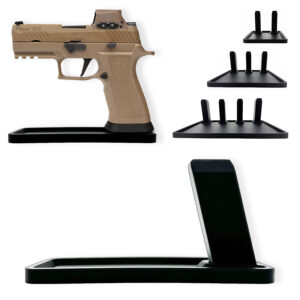
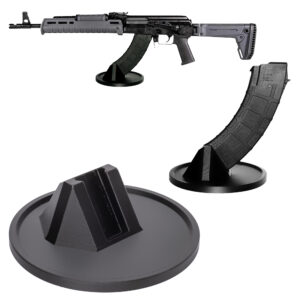

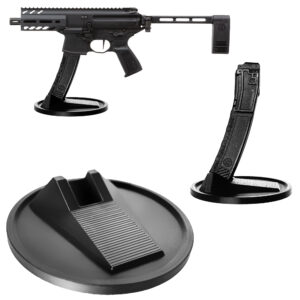
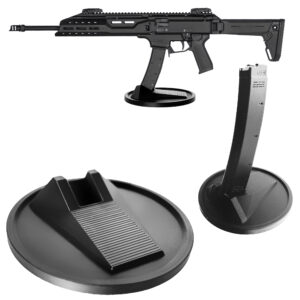
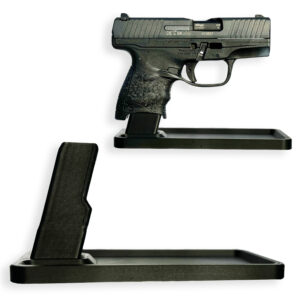


Colt
Colt M4 Carbine
Colt LE6920
Colt AR-15 A4
Daniel Defense
DDM4 V7
DDM4 V9
DDM4 V11
DDM4 ISR (Integrally Suppressed Rifle)
Smith & Wesson (S&W)
M&P15 Sport II
M&P15 Tactical
M&P15T
Bravo Company Manufacturing (BCM)
BCM Recce-16
BCM Recce-14
BCM MCMR Series
Aero Precision
M4E1 Series
AC-15
AR15 Pistol (Various Configurations)
Ruger
Ruger AR-556
Ruger SR-556
Ruger AR-556 MPR (Multi-Purpose Rifle)
Springfield Armory
Saint Victor
Saint Edge
Saint AR-15
PSA (Palmetto State Armory)
PSA PA-15
PSA AR-V
PSA Jakl (AR Pistol)
FN America
FN 15 Tactical Carbine
FN 15 Patrol
FN 15 DMR
Wilson Combat
Recon Tactical
Super Sniper
Protector Carbine
SIG Sauer
SIG M400 Tread
SIG M400 Elite
SIG M400 SDI
LWRC International
IC DI (Direct Impingement)
IC SPR
IC A5
Bushmaster Guns
XM-15 QRC
Bushmaster MOE
XM-15 Patrolman
Rock River Arms
LAR-15 Entry Tactical
LAR-15 Predator
LAR-15 Elite Comp
Stag Arms
Stag 15 Tactical
Stag 15L (Left-Handed Models)
Stag 15 Valkyrie
Noveske Rifleworks
Noveske Gen 4 N4
Noveske Space Invader (AR Pistol)
Noveske Recon
Anderson Manufacturing
AM-15 Optic Ready
AM-15 M4 Carbine
AM-15 Precision Rifle
Adams Arms
AA-15 Piston Rifle
P2 AARS (Adams Arms Rifle Series)
Black Rain Ordnance
SPEC15 Series
BRO Predator
Fallout 15
Diamondback Guns
DB15 Series
DB15CCMLB
DB15EB
Del-Ton Inc.
DTI-15
Del-Ton Echo 316H
Sierra 316M
Windham Weaponry
Windham SRC
Windham VEX-SS
Windham RMCS-4 (Caliber Conversion System)
Christensen Arms
CA-15 G2
CA-15 Recon
CA-15 Titanium Edition
Patriot Ordnance Factory (POF-USA)
Renegade Plus
P415 Edge
Revolution DI
LaRue Tactical
PredatAR
OBR (Optimized Battle Rifle)
LaRue Stealth 2.0
Battle Arms Development
Workhorse Patrol Carbine
BAD556-LW (Lightweight)
Authority Elite Rifle
Faxon Guns
Ascent AR-15
FX-19 (AR Pistol)
Streamline Ultralight Series
KE Arms
KE-15 SLT (Super Lightweight Tactical)
KE-15 Scout Carbine
Primary Weapons Systems (PWS)
MK1 MOD 2-M
MK116 PRO
MK107 (Piston AR Pistol)
ZEV Technologies
ZEV Core Elite Rifle
ZEV AR15 Billet Rifles
Franklin Armory
BFSIII AR-C1
Militia Model
F17-L (Chambered in .17 WSM)
Seekins Precision
SP15 DMR
NX15 Skeletonized Rifle
Havak Bravo
Aero Precision (Additional Models)
EPC-9 (Pistol Caliber ARs)
VG6 AR Rifles
Barrett Guns
REC7 DI
REC7 Gen II
CMMG
MK4 RCE
Resolute 300
Banshee (AR Pistol)
DPMS Panther Arms
Panther Oracle
Panther LR-308
H&K (Heckler & Koch)
HK MR556A1
HK416 (Military Variant)
Rock Island Armory (Armscor)
VR-80 Tactical AR (Shotgun AR Platform)
Troy Industries
Troy SPC-A3
Troy PAR (Pump Action AR)
Wilson Tactical
Tactical Recon AR
Protector Series
F1 Guns
FDR-15 Skeletonized Rifle
BDRx-15 Series
Juggernaut Tactical
JT-15
JT-10 Precision Rifle
AeroSurplus
Surplus AR-15 Rifles (Budget Models)
Thunder Tactical
AR-15 Basic Carbine
Tactical Builder Sets
Radical Guns
RF-15
Forged AR-Series
Dark Storm Industries
DS-15 Featureless Rifles
DS-10 Typhoon
DRD Tactical
Paratus
Aptus AR Rifles
Bear Creek Arsenal
BCA-15
AR Complete Upper Builds
Aero Survival Rifles (ASI)
ASR Tactical Series
Tactical Edge
WARFIGHTER Series
AR-15 Lightweight Rifles
Lone Star Armory
TX15 DMR
TX15 Carbine
HERA Arms
HERA H7
HERA AR-15 Lower Builds
IWI (Israeli Weapon Industries)
Zion-15
DRD Tactical
Tactical Modular Rifles
Quick-Takedown Rifles
V Seven Weapons
1776 Rifle
Hyperlite Rifle
Core Rifle Systems
Core15 Tac III
Core15 Patrol Rifle
Armalite (Original AR-15 Creator)
M15 Tactical
M15 A4 Carbine
DEF15 (Defensive Sporting Rifle Series)
PSA (Palmetto State Armory Additional Models)
PSAK-47 Hybrid (AR-AK Style Hybrid)
PSA Dagger (Pistol Caliber Configurations)
Odin Works
OTR-15
Odin Recon Rifle
Maxim Defense
MDX-508 PDX (Compact AR Pistol)
MDX-510 Rifle